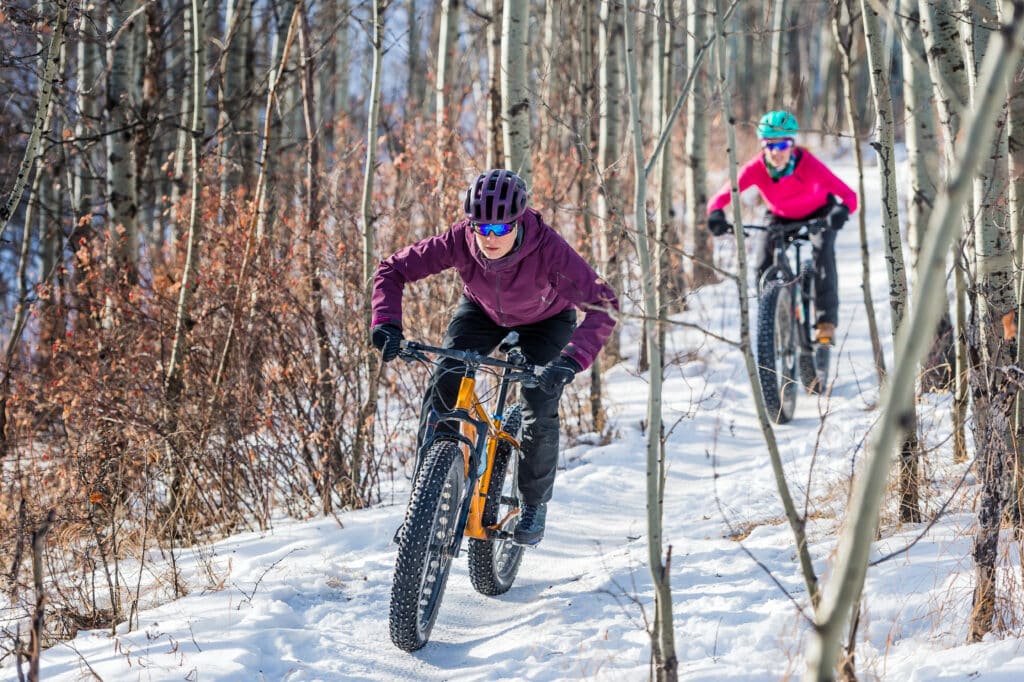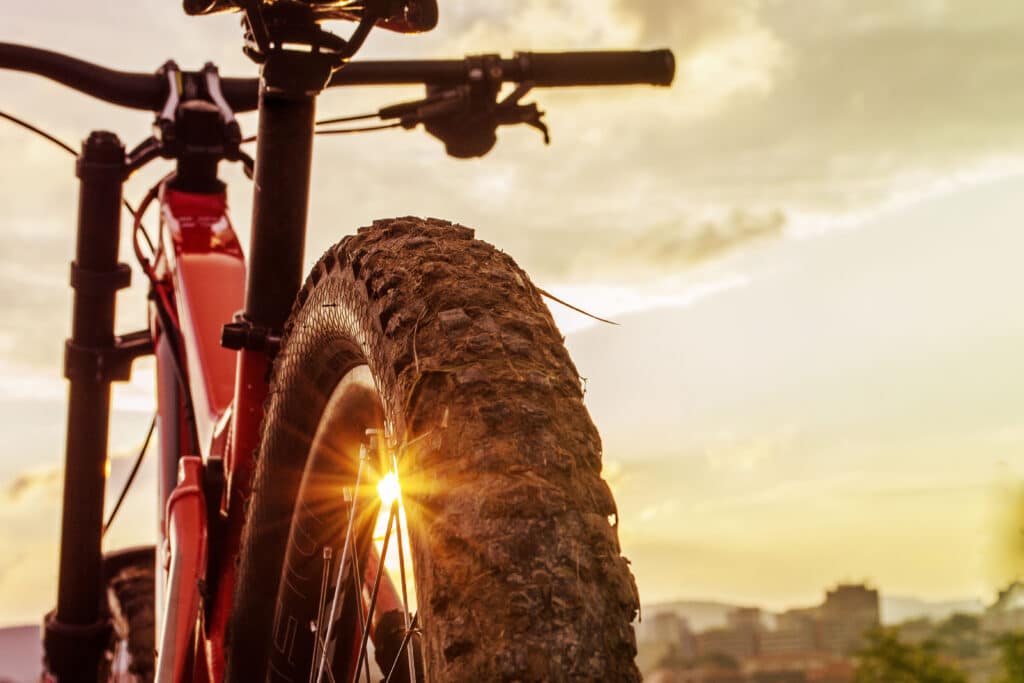Your tires are the only thing connecting you to the trail. Whether you’re charging down techy descents, cruising smooth singletrack, or picking your line through unpredictable backcountry, the right tire setup changes everything. Your mountain bike tires affect how your bike handles, how much grip you’ve got, and how confident you feel when things get sketchy. Get it wrong, and you’re slipping in corners or getting bounced around. Get it right, and you become one with the trail.
This guide breaks down what makes a tire tick and how to match the right ones to your riding style, terrain, and preferences.
Tire Anatomy 101: What Goes into a Good Tire
Understanding the composition of a bike tire, from its rubber compounds and tread patterns to its internal casing construction and bead materials, is crucial for understanding how each type performs in different conditions. Selecting a tire with the appropriate composition will dictate everything from speed and grip to durability and ride comfort.
Tread Patterns
The tread determines how your tire grips the ground. Big, chunky knobs dig into loose terrain and help you stay planted in corners, while tighter, low-profile treads roll faster and feel smoother on hardpack. Look at the spacing, height, and design of the knobs to see how a tire might perform in different conditions.
Casing
The casing is the body of the tire and affects both durability and ride feel. Lower TPI (threads per inch) casings are thicker and burlier, which is better for rocky or technical trails. Higher TPI casings are lighter and more supple, giving a smoother, responsive ride.
Rubber Compounds
Soft rubber provides more traction but wears faster. Harder rubber lasts longer and rolls faster but doesn’t grip as well. Many mountain bike tires use dual or triple compounds to balance grip and longevity, with softer rubber on the edges for cornering and firmer rubber down the center for rolling efficiency.
Bead Types
Wire beads are heavier and less flexible but often cheaper. Folding beads (made from Kevlar or similar material) are lighter, easier to mount, and standard for higher-end tires.
Tire Sizes
29″, 27.5″, and the old-school 26″ each has its place. 29ers steamroll obstacles and carry speed, 27.5″ offers a playful, responsive feel, and riders on older bikes or those building dirt jump setups may still opt for 26″.
Tire Widths
Narrow tires (around 2.0–2.2″) roll faster and weigh less. Wider tires (2.4–2.6″) offer more grip and cushion. Some riders even go 2.8″+, but only if their frame and rims can handle it. Your ideal width depends on terrain, riding style, and personal preference.

Matching Mountain Bike Tires to the Terrain
Not all tires are built the same, and that’s a good thing. The right tread can make the difference between staying upright or washing out in a loose corner, between floating over tech or getting bogged down. Your tire choice should match the terrain you ride most often, whether that’s smooth singletrack or gnarly alpine descents. Below is a breakdown of common tire types and what each is best suited for.
- Cross-Country (XC): XC tires are fast, light, and efficient. Look for low-profile tread and minimal rolling resistance. They’re built for speed, not plushness.
- Trail / All-Mountain: These are do-it-all tires. They’re durable enough for rocks and roots, with versatile tread that grips in various conditions. A good trail tire balances rolling efficiency with confidence in corners.
- Enduro: Tough and grippy. Enduro tires are heavier, with reinforced sidewalls and aggressive tread. They’re designed to handle high speeds and technical terrain without flatting.
- Downhill: Maximum grip, maximum protection. Downhill tires are overbuilt to take the punishment of steep, fast descents. Expect stiff casings, sticky rubber, and deep knobs.
- Mud/Wet Conditions: Choose tires with tall, widely spaced knobs to shed mud quickly and keep traction on slick stuff. Softer compounds help grip slick roots and wet rocks.
- Dry/Loose Conditions: Look for open tread patterns with bite. These tires dig into loose-over-hard surfaces and offer control in drifty corners.
- Hardpack: For smoother trails, opt for a low-profile tread that rolls fast but still provides predictable grip when cornering.
- Snow/Fat Bike: Fat tires (4″ or more) provide flotation on snow and sand. Run lower pressures for more grip, and make sure to pick a tread suited to the specific conditions, whether it’s packed snow, ice, or powder.
Tubeless vs. Tubed
Tubeless tires have become the norm for most mountain bikers. They let you run lower pressures without pinch flats, improve grip, and self-seal small punctures. You’ll need sealant, tubeless-ready rims, and some patience with setup. Once dialed, they’re reliable and low-maintenance. Tubed setups are simpler to install and can be easier to fix trailside, but they’re more prone to flats and pinch issues. Some riders still prefer tubes for budget builds or occasional riding.
Getting Tire Pressure Right
Tire pressure affects traction, comfort, and how your bike reacts to the trail. High pressure feels fast on smooth surfaces but limits grip and gives a harsh ride. Low pressure increases traction and comfort but can lead to rim strikes or burping with tubeless setups. Start with manufacturer guidelines, then adjust based on the following:
- Your weight and gear load
- Terrain (rocky, soft, or hardpack)
- Riding conditions and temperature
- Whether you’re running tubes or tubeless, a digital pressure gauge and experimenting in small increments (1–2 PSI) can make a noticeable difference.
Care for Mountain Bike Tires
Check your tires regularly for damage and wear. Torn knobs, exposed threads, or cracks in the sidewall mean it’s time to swap. Clean your tires with mild soap and a soft brush after muddy rides. It might seem like needless nitpicking, but it helps preserve rubber and casing integrity. For tubeless setups, inspect sealant levels every couple of months and top off as needed. As for how long your tires will last, riding style plays a big role in longevity. Aggressive trail and enduro riders may replace tires every few hundred miles, while XC or casual riders can get well over a thousand. Always carry a spare tube or plug kit when picking your gear, just in case.
Mountain Bike Tire FAQs
Absolutely. Many riders do. A grippy front tire for control and a faster rear tire for reduced rolling resistance is a common setup.
When knobs are rounded, the sidewalls are fraying, or traction noticeably drops, it’s time.
If you ride regularly and want fewer flats and better grip, tubeless is worth the switch.
Yes. Even a few PSI can change how your bike feels and performs. Don’t set it and forget it.

